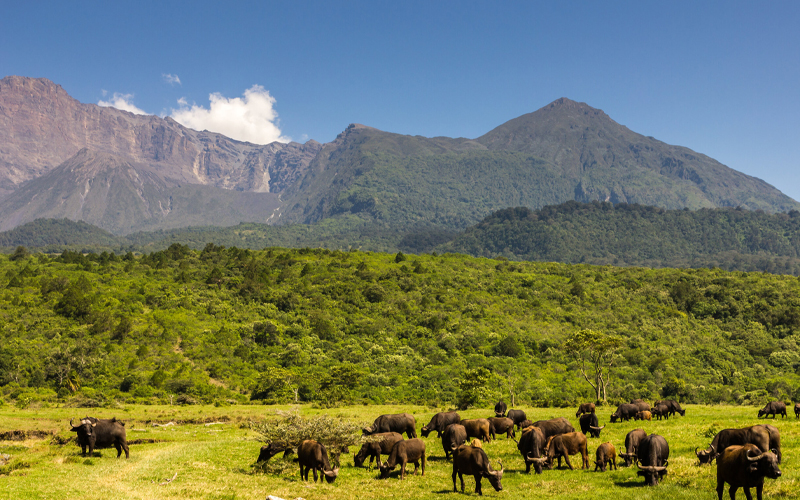
AREA
137 km2 (53 sq mi)
VISITORS
Over 66,808 per year
LOCATION
Northern Tanzania
Arusha National Park
Arusha National Park: Wildlife Highlights
- Arusha National Park covers an area of 137 square kilometers (53 square miles).
- Arusha National Park is home to a variety of large mammals, including giraffes, elephants, buffalo, zebras, and bushbucks.
- Arusha National Park hosts over 400 bird species, making it a prime destination for birdwatching.
- Arusha National Park is known for its diverse ecosystems, including montane rainforests, savannahs, and the Momella Lakes, creating a unique wildlife experience close to Arusha city.
Key Attractions
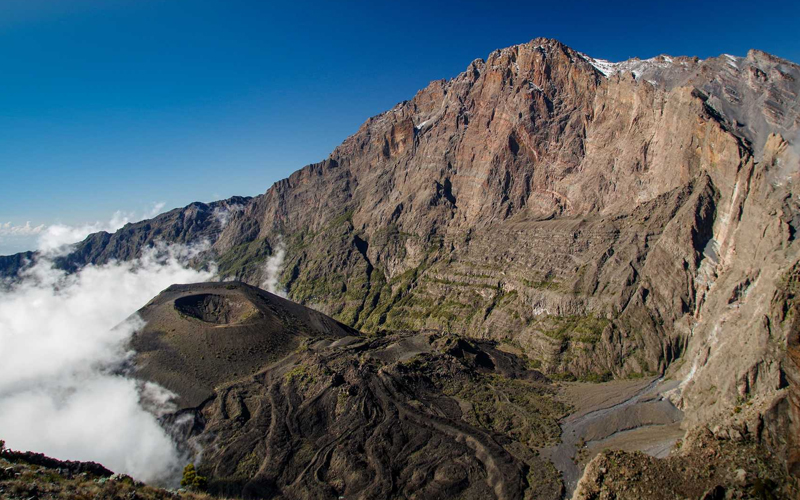
Mount Meru
Standing at 4,566 meters (14,980 feet), Mount Meru is one of the park’s top attractions, offering challenging treks with panoramic views of Kilimanjaro and the surrounding areas. Climbing Meru is popular among hikers and serves as an excellent acclimatization climb for those planning to tackle Kilimanjaro.
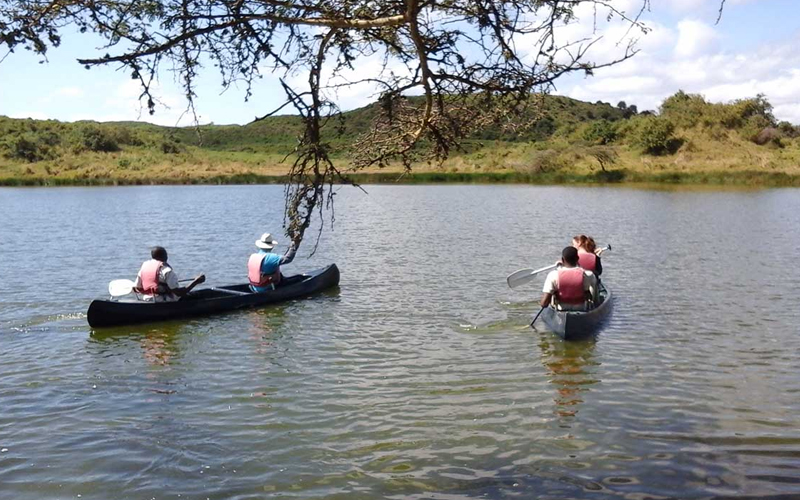
Momella Lakes
These shallow alkaline lakes, colored by mineral deposits, attract large flocks of flamingos and various waterbirds. The lakes are perfect for birdwatching and offer a serene, picturesque setting for canoeing.
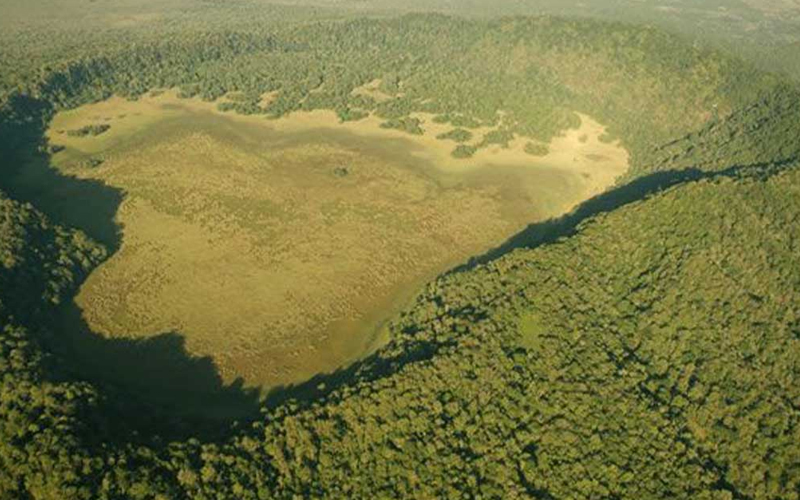
Ngurdoto Crater
Often compared to the Ngorongoro Crater, this swampy crater is home to a diverse array of wildlife, including buffalo, warthogs, and monkeys. Although visitors cannot descend into the crater, scenic lookout points offer beautiful panoramic views.
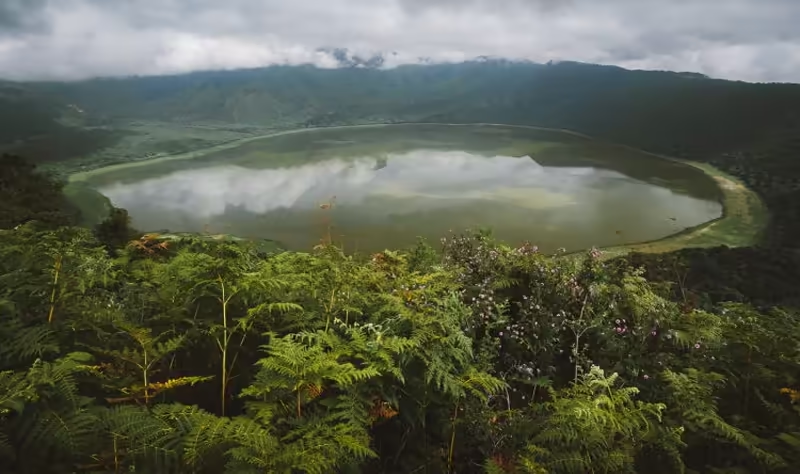
Rainforest and Waterfalls
The park’s montane rainforest is a haven for primates, including colobus and blue monkeys, as well as various bird species. Visitors can enjoy hikes through lush forests to discover hidden waterfalls like the Tululusia Waterfall.
Wildlife In Arusha National Park
Arusha National Park’s diverse habitats support a wide range of wildlife, from large mammals to elusive primates and exotic birds:
- Large Mammals: The park is home to buffalo, giraffes, zebras, warthogs, and elephants. Buffalo are particularly common, often seen grazing in the grasslands near Ngurdoto Crater, while giraffes, with their graceful necks, roam the open savannah.
- Primates: Colobus and blue monkeys are commonly sighted in the forested areas, along with olive baboons. The black-and-white colobus monkeys, with their striking fur patterns, are a visitor favorite and symbolize the park’s rich biodiversity.
- Birdlife: With over 400 bird species, including both resident and migratory birds, Arusha National Park is a paradise for bird enthusiasts. Flamingos, pelicans, kingfishers, and a variety of raptors can be found around the Momella Lakes, while the forest harbors turacos, hornbills, and bar-tailed trogons.
- Other Species: Small antelope, bushbucks, duikers, and dik-diks are scattered throughout the park, especially in forest clearings. Leopards and hyenas are also present but are more elusive, typically spotted at night or during the early morning hours.
Safari Activities in Arusha National Park
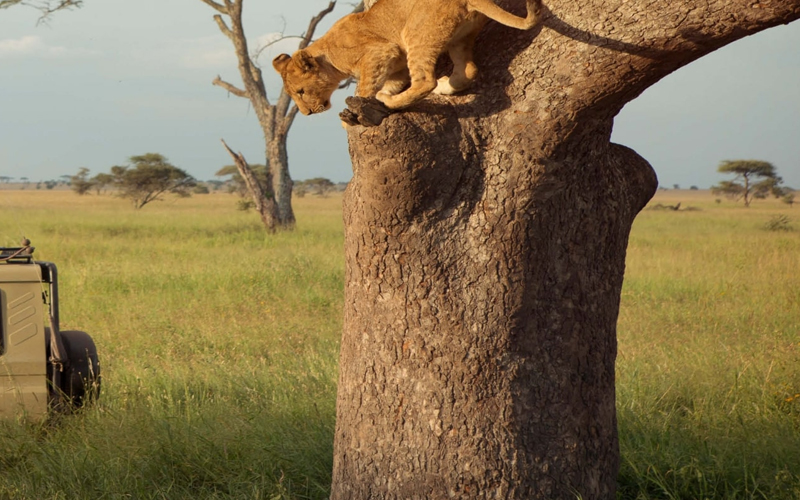
Game Drives
Day-long game drives allow visitors to explore the park’s varied habitats and spot its diverse wildlife, from giraffes to primates and birds.
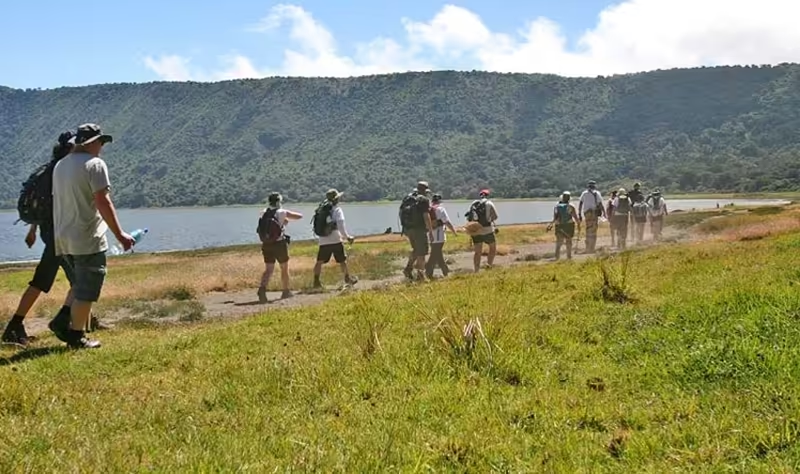
Walking Safaris
Accompanied by a ranger, visitors can explore the park on foot, observing plants, birds, and animals up close. This unique experience is rare in Tanzanian parks, adding to Arusha’s appeal.
Birdwatching
- With an array of resident and migratory bird species, Arusha National Park is ideal for birdwatching, particularly around the Momella Lakes and forest areas.
Canoeing
- A canoeing tour on Momella Lakes offers a peaceful way to see hippos, waterbirds, and scenic views of Mount Meru.
Mount Meru Trekking
- This multi-day trek provides a chance to encounter wildlife along the trail and take in breathtaking views from the summit.
Best hotels and lodges in the Arusha National Park
The Arusha National Park is home to a variety of luxurious lodges, eco-friendly camps, and mid-range accommodations that provide comfortable stays and breathtaking views. Here are some of the best options:

